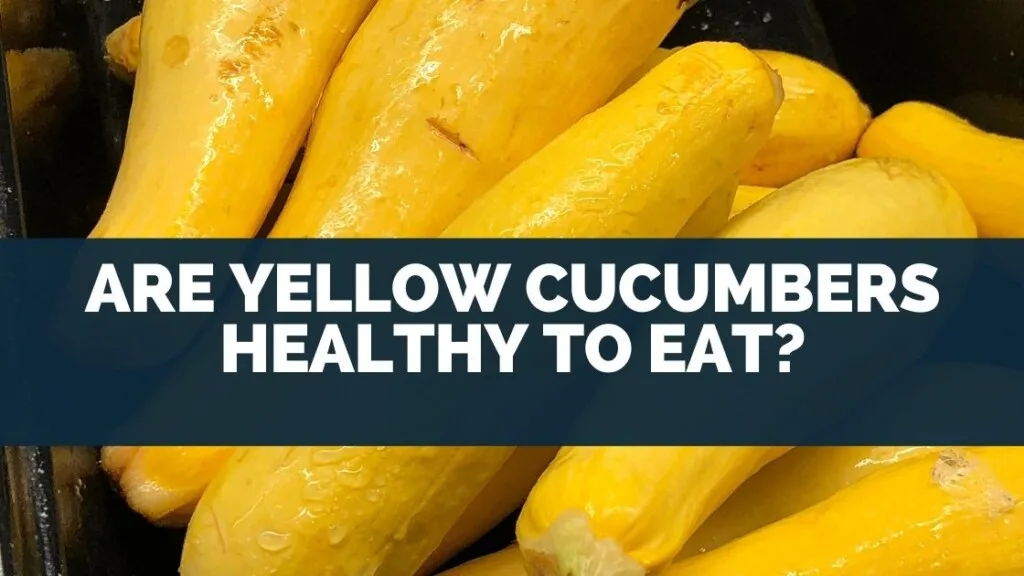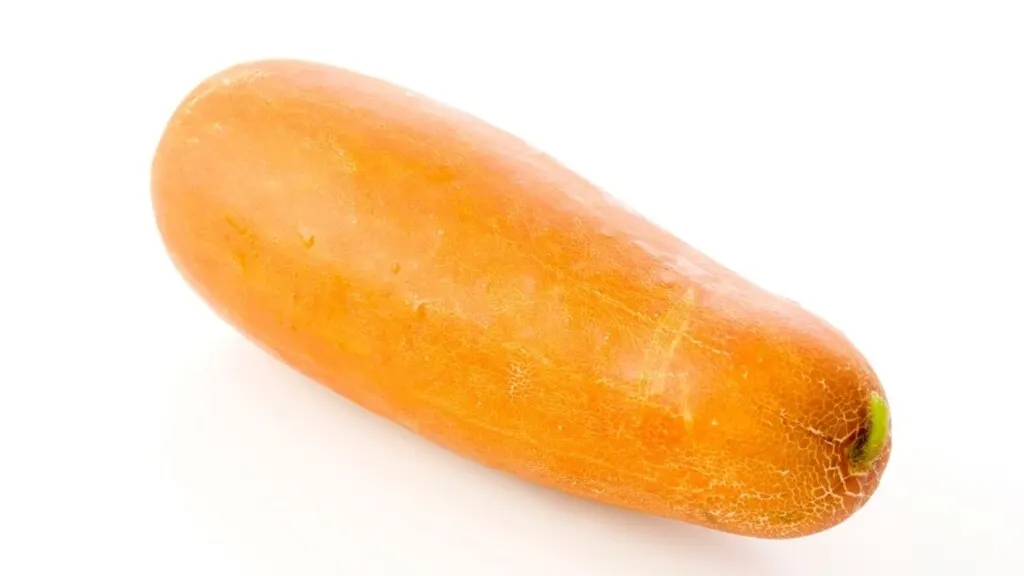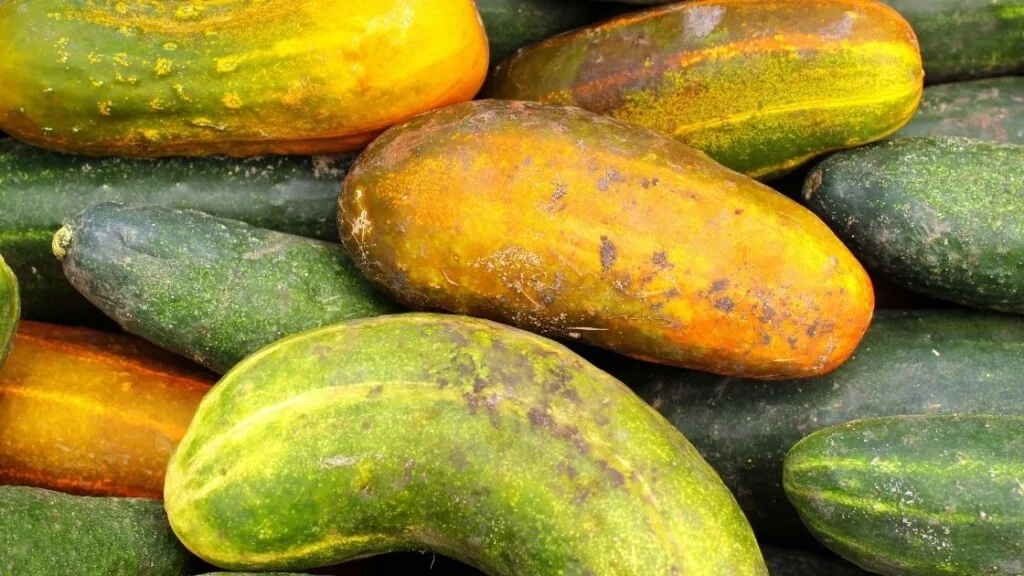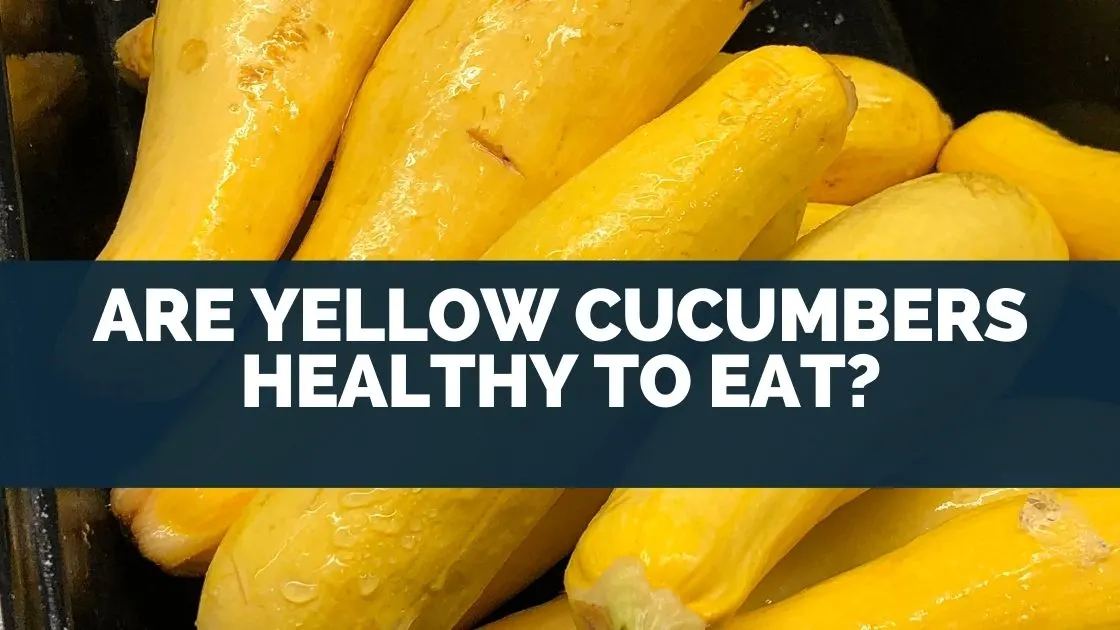
Yellow cucumbers are easily recognizable due to their yellow or golden color.
They have the same nutritional value as green cucumbers, but they have a different taste and texture.
They can be used with other types of cucumbers, depending on your preferences, recipes, and availability.
Table of Contents
Can you eat yellow cucumber?
Yes, they are safe, but you probably won’t eat them because they taste bad. They have a bitter taste which is not appetizing.
Overripe cucumbers that have been growing for a long time are bitter and unpleasant to eat because they are so old.
However, there are a few ways to eat them. Relish made with yellow cucumbers is a great way to use them because the pickling ingredients cover up the cucumber’s bitter taste.
Why do cucumbers turn yellow?

A lot of things can make cucumbers turn yellow. There could be a lot of things going on, like too much watering and not enough pollination.
Viruses may also be a part of the problem.
Keep in mind that some cucumbers should be yellow. The label should say things like “Yellow Submarine,” “Lemon Yellow,” or “Salt and Pepper.” Make sure you are growing a yellow cucumber variety.
These cucumber varieties produce naturally yellow fruit that is never bitter and is safe to eat.
Harvesting too late causes yellow cucumber
One of the most common causes of yellowing cucumbers is not picking them at the right time. During the process of growing cucumbers, their dark color fades away, leaving them with a yellow or even orange hue instead.
These cucumbers are cylindrical in shape, but they often grow to huge sizes. They’ve simply been growing for an inordinate amount of time.
Allowing cucumbers to grow on the vine for a long time leads to fewer fruits.
Regular harvesting of cucumbers encourages the plant to make more fruit.
Cucumbers that have been on the vine for a long time taste bitter.
The easiest way to get rid of them is to harvest them earlier. About 10 days after pollination, most plants will be ready to eat.
In general, cucumbers are ready to eat after 50 to 70 days, depending on the type. They are ready when they are bright green to dark green and firm.
Overwatering can cause yellow cucumber
If you overwater cucumber plants, you will run out of important minerals in the soil, like calcium and nitrogen, which your plants need.
If this occurs, cucumbers will turn yellow early, well before they would normally be harvested.
The best way to solve this problem is to stay away from water. Cucumbers only need two inches of water a week in the summer and one inch in the winter.
Cucumber plants have shallow roots that need water, but they should not be allowed to stand in water. Because of this, they turn yellow.
For best results, water deeply and slowly a couple of times per week. It takes a lot more than that for the soil to run out of nutrients.
Inadequate nutrition can mean yellow cucumber
When cucumbers get the right mix of nutrients, they grow well. Cucumbers that don’t get enough fertilizer will stay small and turn yellow more often than cucumbers that get enough fertilizer.
To avoid this, plant with a balanced fertilizer or amend the soil with compost or other organic matter at the time of planting.
Fertilize again after the flowers have come out, and then every month during the growing season.
Crop rotation is required to prevent the growth of yellow cucumbers. If you continue to grow your plants in the same location year after year, the soil will become depleted of the nutrients necessary for healthy cucumber growth.
In fact, this is true for all vegetables that are grown in the garden, not just cucumbers. Switch things up!
Viral diseases in cucumbers
Cucumber mosaic virus can change the color of the fruit over time, making it turn yellow-green and then brown. This virus is also responsible for bitter cucumbers.
This virus makes cucumber leaves look mottled and distorted.
Due to the virus-distorted leaves’ inability to function normally, the plants struggle to grow and eventually cease to grow. This can make small cucumbers and have white or yellow spots on them.
How to Prevent Yellow Cucumbers?

Know When to Pick a Cucumber
Most cucumbers are consumed young. Cucumbers can be picked at any time, as long as they are not too seedy or the seeds are not too hard.
Because thinner cucumbers contain fewer seeds than thicker cucumbers, you may wish to select smaller cucumbers rather than allowing them to mature on the vine. Indeed, the majority of cucumbers are selected according to their length, which ranges from 2 to 8 inches (5-20 cm).
When to pick a cucumber is usually determined by the type and purpose of the cucumber. For example, cucumbers grown for pickling are much smaller than those grown for slicing.
Cucumbers should be picked every other day at the very least due to their rapid growth.
Avoid Overwatering
Cucumbers need only two inches of water a week, even when there is a long drought. You should only use 1 inch of water per week, even if there is a lot of rain.
This is about six to twelve gallons of water per square foot of soil. To get the best results, water your plants slowly and deeply twice a week, but not too much.
Stop Cucumber Mosaic Virus
It is important to stop the cucumber mosaic virus from spreading. When you plant cucumbers, cover the seedlings with permeable fabric row covers.
They are light enough to lift, letting air, light, and moisture in, but keeping virus-carrying aphids out, so they can stay out.
Conclusion
Cucumbers should not turn yellow during storage. A yellow cucumber is almost always a sign of overripeness.
Cucumbers turn bitter when they are ripe, and yellow cucumbers aren’t good to eat because of this fact.
Another possible reason why cucumbers turn yellow is that they have a virus, too much water, or not enough food.


Leave a comment